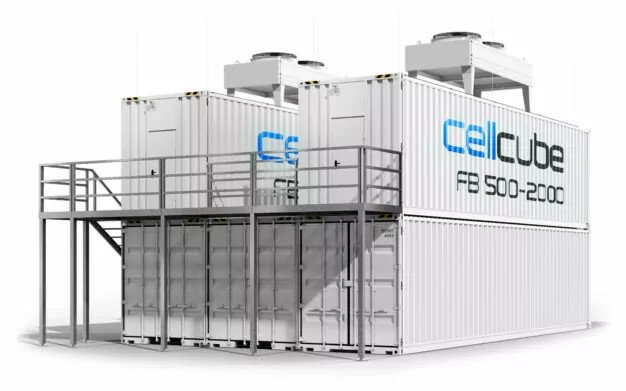Leading manufacturer of Vanadium Redox Flow Batteries (VRFB) Enerox GmbH, aka 'CellCube', and Australian clean energy storage operator North Harbour Clean Energy PTY Ltd (NHCE) have recently signed a strategic manufacturing cooperation agreement to build an assembly and manufacturing line in Eastern Australia to meet GWh demand for long duration energy storage in the National Electricity Market (NEM).
The first project executed by the partnership will be developing the continent's largest VRFB generating 4MW-16MWh based on CellCube's proprietary technology. The partners will also conduct a feasibility study and work towards a final investment decision on a 50:50 joint venture to manufacture VRFBs in Australia.
VRFBs are large-scale, battery storage systems which can store excess power from the grid and can be used in combination or parallel with other renewable energy sources to allow for cheaper, safer, and more scalable energy consumption.
Further, they do not suffer from the multiple issues faced with lithium-ion batteries (LIBs) such as their flammable nature, short life span, rapid degradation, lack of recyclability and lack of flexibility. On a levelized cost of storage basis, VRFBs already outperform LIBs whilst having none of the drawbacks associated with them, according to the manufacturer.
CellCube CEO Alexander Schoenfeldt said, "Following our own research and development initiatives both internationally and in Australia to support the vision of large-scale production and deployment of VRFBs as the preferred energy storage technology long term, we are thrilled to have NHCE as a strategic partner in Australia".
"This cooperation with NHCE follows our business strategy to strengthen regional partnership, create a local product offering and enhance our work with Australian supply chain partners to build well designed megawatt microgrids", he added.
In addition, Australia has around 20 percent of known global Vanadium resources, and it makes economic sense to use local Vanadium instead importing it from elsewhere, Schoenfeldt said.
There is significant demand for long duration energy storage systems (LDES) to allow for 24/7 delivery of carbon free electricity to meet net-zero goals driven by the demand to meet Australia's legislated carbon reduction targets.
Further, the rapid build out of utility-scale variable renewable energy and accelerated shutdown of baseload coal-fired generators are yet another push factors.
NHCE is backed by one of Australia's largest superannuation funds - Aware Super. The company has already secured a large project pipeline to include deployments of VRFBs.
"We are excited to bring manufacturing of this Australian-invented and critical energy storage technology to Australia with our strategic partner CellCube", said NHCE Managing Director and founder Tony Schultz.
"NHCE and CellCube will collectively review and select the best site to deliver initial annual production capacity of at least 40MW/ 160MWh, with a target of 1000MW/ 8000MWh per year and creating more than 200 new jobs in the short term.
"We believe there are two factors behind our belief that VRFB is the right grid-energy storage technology to install in Australia at scale. The first is that VRFB technology, having been developed in Australia at the University of New South Wales (UNSW) in the mid 1980's, is now on the road to being an accepted alternative battery energy storage technology globally while the second is Australia's abundant vanadium resources."
As part of the Agreement, a 4MW-16MWh CellCube system will be installed at an industrial customer to showcase the various applications which will enable them to move towards net-zero emissions targets.
Read More

